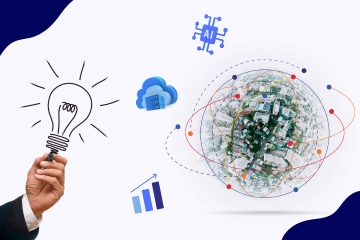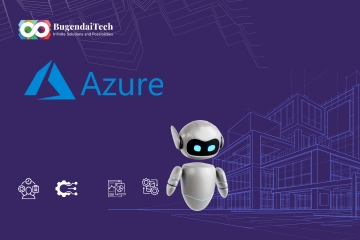In AI, the ability to transform textual information into structured knowledge has become a critical skill. Knowledge graphs are a powerful tool, allowing users to visualize and understand complex relationships between data points. However, creating these graphs from raw text can be daunting, particularly for those without a background in natural language processing (NLP) or data science.
Enter Graph Maker, a revolutionary knowledge graph software designed to simplify this process, making it accessible to everyone, regardless of their technical expertise.
A knowledge graph is a network of entities, where each entity is represented as a node, and the connections between them are represented as edges. This graphical representation provides an intuitive way to explore and understand the relationships between various pieces of information.
Knowledge graph applications are used in various fields, from enhancing search engine capabilities to powering recommendation systems and even supporting complex research projects.
Challenges of Converting Text to Knowledge Graphs
Converting unstructured text into a structured knowledge graph involves several intricate steps:
- Text Parsing: This step involves extracting meaningful data from unstructured text, which can be a complex task given the nuances of human language.
- Entity Recognition: Identifying and categorizing entities such as people, places, organizations, and other significant terms within the text.
- Relationship Extraction: Determining how these identified entities are connected to each other based on the context provided by the text.
- Graph Construction: Building a visual representation accurately reflecting the entities and their relationships.
Traditionally, these tasks require a deep understanding of NLP and data science techniques, often making the process inaccessible to many potential users. This is where the Graph Maker tool comes in, offering a user-friendly knowledge graph builder to streamline and automate much of this workflow.
Introduction to Graph Maker
Graph Maker is an innovative tool designed to democratize the creation of knowledge graphs. It brings advanced NLP capabilities to a broader audience by offering an easy-to-use interface and automated features that handle the heavy lifting. Here's how Graph Maker transforms the process of converting text to a knowledge graph:
- Intuitive Interface: Graph Maker's interface is designed to be straightforward and user-friendly. Whether you are a novice or an experienced user, the tool guides you through each step of the process with ease.
- Automated Text Parsing: The tool leverages advanced NLP algorithms to automatically parse input text, extracting relevant entities without manual intervention.
- Accurate Entity Recognition: Graph Maker employs state-of-the-art NLP techniques to accurately identify and categorize entities within the text, ensuring that your knowledge graph is both comprehensive and precise.
- Contextual Relationship Detection: Graph Maker analyzes the context in which entities appear to infer relationships, adding depth and accuracy to your knowledge graph.
- Customizable Visualization Options: Once your graph is constructed, Graph Maker offers various visualization options, allowing you to present your data most effectively.
Step-by-Step Guide to Using Graph Maker
To demonstrate how easy knowledge graph creation can be, let's walk through the process of converting text into a knowledge graph:
- Input Your Text: Start by inputting the text you want to convert into a knowledge graph. This could be anything from a research paper to a news article. Simply copy and paste the text into the tool or upload a document file.
- Initiate Parsing: Click on the parse button to start the process. Graph Maker automatically analyzes the text, identifying key entities and potential relationships.
- Review Identified Entities: Review the entities that Graph Maker has identified. You can add, remove, or modify entities to ensure the graph accurately reflects the information you want to capture.
- Define Relationships: Specify relationships between entities if necessary. While Graph Maker suggests relationships based on the text, you can fully refine these connections to meet your specific needs.
- Generate the Graph: Once you're satisfied with the identified entities and relationships, generate the knowledge graph. You can choose from various visualization styles to best represent your data.
- Export and Share: Export your knowledge graph in your preferred format, such as an image, a PDF, or an interactive web format. Graph Maker supports multiple export options, making integrating your graph into reports, presentations, or websites easy.
Benefits of Using Graph Maker
Graph Maker offers numerous benefits, making it an essential tool for anyone looking to convert text into a knowledge graph:
- Efficiency: Automates complex processes, significantly reducing the time and effort required for automated knowledge graph generation.
- Accuracy: Utilizes advanced NLP algorithms to ensure precise NLP entity recognition and relationship extraction.
- Accessibility: Designed with a user-friendly interface, Graph Maker is accessible to users with varying levels of technical expertise.
- Customization: Allows users to manually adjust entities and relationships, ensuring the final graph meets specific requirements.
- Visualization: Provides multiple knowledge graph visualization options, enhancing the presentation and comprehension of data.
Real-World Applications of Knowledge Graphs
Knowledge graphs have a wide range of applications across various industries:
- Search Engines: Google uses knowledge graphs to enhance search results, providing users with more relevant and comprehensive information.
- Healthcare: Knowledge graphs help organize medical data, enabling researchers to uncover relationships between diseases, treatments, and genetic factors.
- Finance: Financial institutions use knowledge graphs to detect fraud, analyze market trends, and manage risk by understanding the relationships between various financial entities.
- Education: Knowledge graphs help develop intelligent tutoring systems that adapt to students' learning needs by understanding the relationships between concepts.
- Customer Service: Businesses use knowledge graphs to improve customer support by organizing information about products, services, and common issues, making it easier to provide accurate and timely assistance.
Conclusion
Graph Maker is revolutionizing how we convert text into knowledge graphs, making the process straightforward and efficient. By leveraging this tool, users can unlock the full potential of their data, gain valuable insights, and present information clearly and concisely.
Whether you're a researcher, data scientist, or simply someone looking to make sense of complex text, Graph Maker is the perfect solution to transform your textual data into actionable knowledge.
With its intuitive interface, automated text parsing, accurate NLP entity recognition, and customizable knowledge graph visualization options, Graph Maker makes creating detailed and meaningful knowledge graphs easier than ever. This tool saves time and effort and ensures that your data is presented in a way that is accurate and visually appealing. Embrace the power of Graph Maker and take your data analysis to the next level.






Comments